With artificial intelligence on the rise, algorithms are getting better at visual tasks. Today’s computer vision applications can already read texts with ease. They can identify objects, classify them and track their movement. They can recognize human faces and convincingly transform them. Moreover, computer vision makes machines comprehend and interpret visual data. From medical imaging and fraud detection to autonomous driving, the technology is firmly on the way to revolutionizing nearly every industry sector.
Consequently, various businesses, whether digitally native or brick-and-mortar, are increasingly using computer vision programs for their operations or exploring new applications for the technology.
Computer vision is not just about building systems that see, but building systems that can interpret what they see.
Whether you’re familiar with AI, machine learning and computer vision or new to the concepts, read on. We’ll define computer vision and explore its growth and how it works. Finally, we’ll take you on a tour of the usages of computer vision applications and how they are refined across five major industries. Almost every sector has use cases for computer vision, but we’ll look at transportation, healthcare, manufacturing, retail and agriculture. During this analysis, we’ll give some examples of computer vision-based AI applications and illustrate how these technologies are widespread in our daily lives.
Defining computer vision
First, how do they define computer vision? Let’s start with the basics. Simplistically, computer vision AI technology is the field of computer science that enables computer systems to see and understand the world around them. Data processing allows these systems to decide what they see and act accordingly.
More technically, computer vision is a field of AI that enables computers and systems to derive meaningful information from digital images, videos and other visual inputs. The models then act or make recommendations based on what they learn from the input.
How is computer vision different from machine vision?
There’s a subtle but important distinction between computer vision and machine vision. Computer vision relies on ML and uses enormous processing power to apply algorithms to large quantities of data. Computer vision systems collect as much visual data as possible and then process that information to apply it to various tasks. That’s what gives applications of computer vision their flexibility.
Machine vision is a lighter-weight subset of computer vision. Machine vision typically focuses on a narrow task. In manufacturing, machine vision (or robot vision) is often used for quality control and to guide objects down an assembly line. We will discuss this later in the section about computer vision and manufacturing.
The goal of computer visual recognition
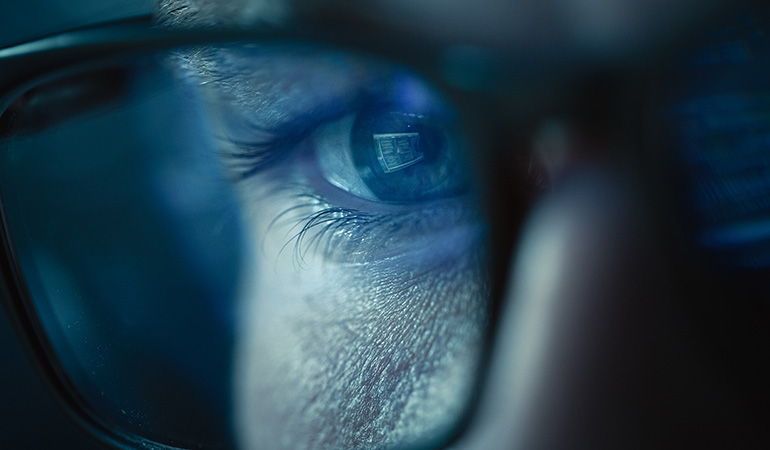
Computer vision aims to replicate the complexity of human vision. How? By giving computers a way to interpret and understand the world through images. Computer vision applications rely on visual AI. The machines are trained on massive datasets of visual information in a process called ML. The only difference is that the data between computer vision and other data used in AI is that computer vision processes visual instead of contextual data.
With enough training, AI software can make sense of visual inputs, but most computer vision technology doesn’t approach human vision. AI still struggles with adaptability, handling ambiguity and context-based understanding. For example, an early release of Stability’s AI model recognized the same element was present in many photos in its training data. Its art generator, Stable Diffusion, started putting that element in photorealistic images. Unfortunately, AI did not know that the image element was the Getty Images logo, and it infringed on Getty’s trademark. Stable Diffusion also admitted that it had been training with Getty’s photos without permission.
That said, computer vision technology is impressive and has many use cases. AI is better than humans at some visual tasks and is almost always faster. But before we dive into how computer vision is used in different industries, let’s look at how computer vision technology works today.
How we ‘see’ the world through machine eyes today
Computer vision systems use a combination of hardware and software to extract, analyze and understand visual information. This information can come from an image or a sequence of images (in other words, a video). In very simple terms, the steps of computer vision include:
- Training: An algorithm is trained on massive visual datasets
- Input: Cameras, sensors and other imaging devices capture visual data
- Processing: The computer vision algorithm analyzes the input and identifies patterns, objects and relationships
- Decision-making: The machine uses analytics to make informed decisions or predictions
- Action: The machine performs a task based on its visual analysis
Computer vision has been around for decades, but recent developments in AI have improved real-time processing and decision-making. With modern neural network technology, computer vision systems have shot up from 50% accuracy to 99% accuracy in less than 10 years. In some cases, the changes are so good that computer vision is comparable to human vision for recognizing and responding to visual input.
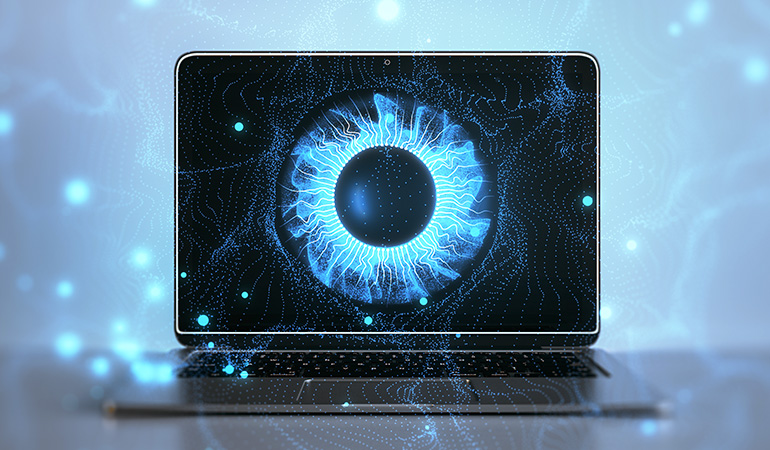
Consider these processes in computer vision and the complex tasks they do:
Recognizing and classifying objects
Computer vision techniques can identify and categorize objects within images with impressive accuracy. This includes faces, animals, vehicles, specific products and even complex scenes.
Examples from everyday life include:
- Snapchat — filters can make you look like a cat in a hat because the app recognizes your face
- iPhone Photos — this app personalizes photo collections by classifying your photos into categories
Tracking and detecting motion
Tracking movement and detecting motion are core capabilities of computer vision systems. Motion tracking and detection help machines interpret what exists in an image and when and how a scene changes. This dynamic understanding of an image over time opens a wealth of applications for computer vision, including:
- Home security cameras — motion-activated sensors can turn on the camera to record suspicious activity
- Autonomous vehicles (AVs) — continuously scanning the environment enables AVs to detect objects in their path, such as pedestrians, other vehicles and potential hazards, all while navigating busy streets
Segmenting and analyzing images
Computer vision can be used to break up images into their constituent parts. This process, called segmenting, can mean separating foreground from background. It can also involve identifying specific regions of interest. This kind of analysis is crucial for tasks including:
- Radiology — image segmentation helps healthcare professionals identify abnormalities in medical images, including X-rays, MRIs, CT and PET scans
- Automated content moderation — social media companies use computer vision to automatically detect unwanted content in images or videos
Understanding 3D structure and depth
Computer vision systems can also perceive depth, grasp objects’ spatial relationships, decipher shapes and sizes in the real world and construct 3D models from visual data. Using computer vision in 3D object detection opens doors to applications such as:
- Robotics — understanding the world in 3D helps household vacuum robots navigate complex environments
- Augmented reality (AR) — computer vision apps with accurate depth perception and 3D understanding can create passthrough vision, where virtual objects are seamlessly overlaid onto the real world
Computer vision usage: seeing is believing
While there’s some discrepancy in the exact numbers, research firms agree that computer vision technology is a non-stop growing market. We’ve seen predictions everywhere from an 11% compound annual growth rate (CAGR) over the next 10 years to almost 19%.
Global computer vision market. Size by component.

Source: Market.us
While analysts disagree on the exact numbers, the outlook for computer vision is optimistic. The market will grow to $59.8 billion in 2033, as shown in the graph above. Allied Market Research projects that the computer vision market will reach $82.1 billion by 2032. With the proliferation of cameras in smartphones, security systems and other devices, we’re generating more visual data than ever before. This vast data pool serves as fuel for training and improving computer vision projects.
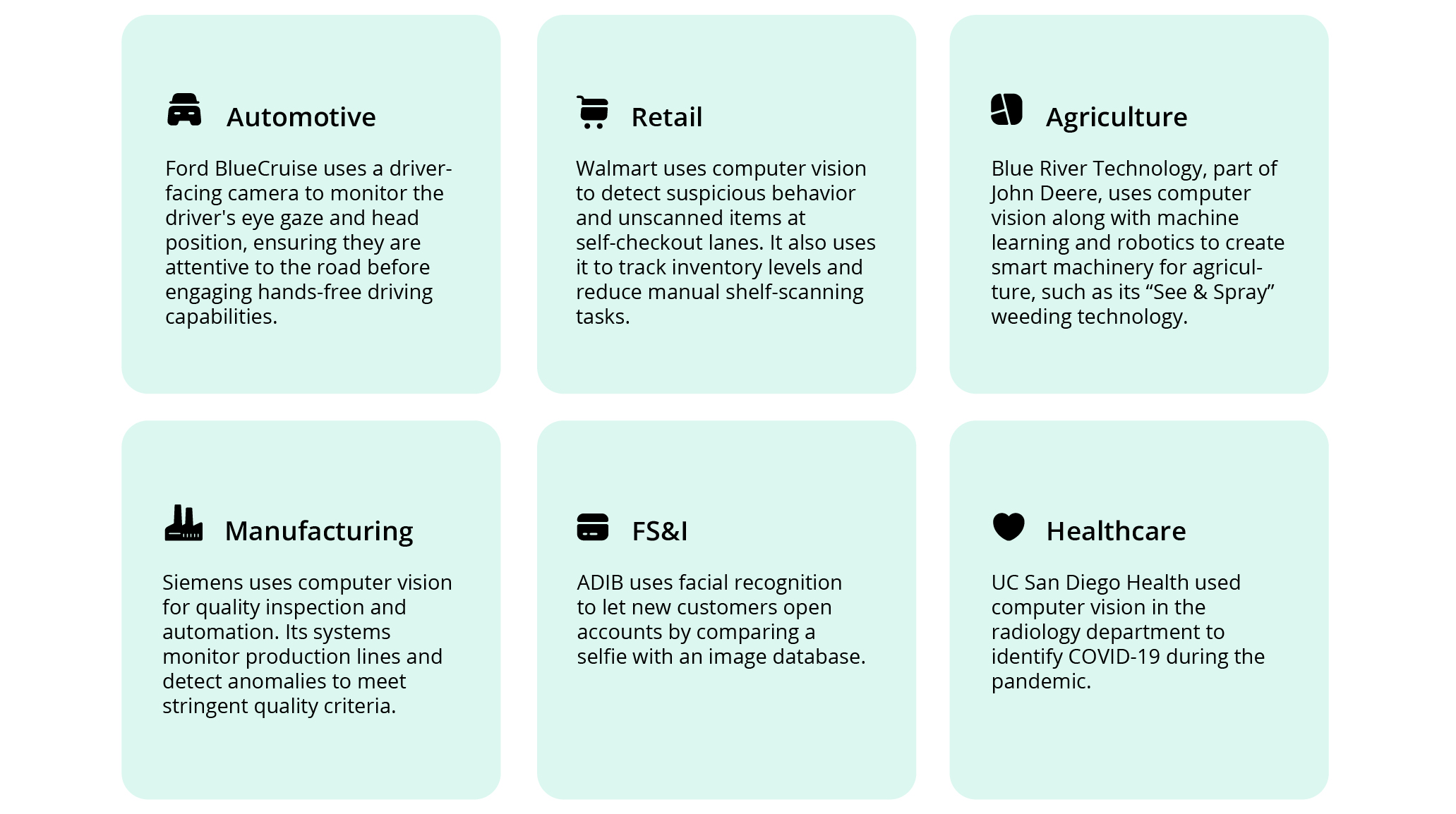
Benefits of computer vision
Advances in deep learning have improved the accuracy and performance of computer vision technologies. Key components in computer vision, like open-source tools and cloud computing platforms’ services, have also made the technology more affordable and accessible. As a result, developers and companies of all sizes are building computer vision tools.
Computer vision can be used in systems capable of solving real-world problems all around us:
- Supporting real-time applications by processing visual data much faster than humans can
- Reducing human bias, fatigue and error by performing menial tasks with consistent results
- Automating and scaling processes that would be unsafe or impractical for humans
- Monitoring environments and equipment to ensure safety and prevent accidents
- Extracting business insights from visual data analytics to support decision-making and strategy planning
Now that you have a solid foundation in computer vision, its growth and its benefits, let’s dive into use cases. We’ll show how five different industries are using computer vision to transform how they do business.
Computer vision in mobility and transportation
Self-driving cars would not be possible without computer vision. But autonomous vehicle (AV) buyers aren’t the only drivers touched by AI. If you’ve ever used a car with a backup camera that warns you of nearby objects, you’ve encountered computer vision technology. In fact, in recent years, computer vision applications have reshaped everyone’s experience on the road.

Here are just a few computer vision applications examples in transportation.
Autonomous vehicles
Autonomous vehicles rely on four key elements to process images and make real-time driving decisions: car sensors, connectivity, a high-accuracy positioning system and machine learning algorithms.
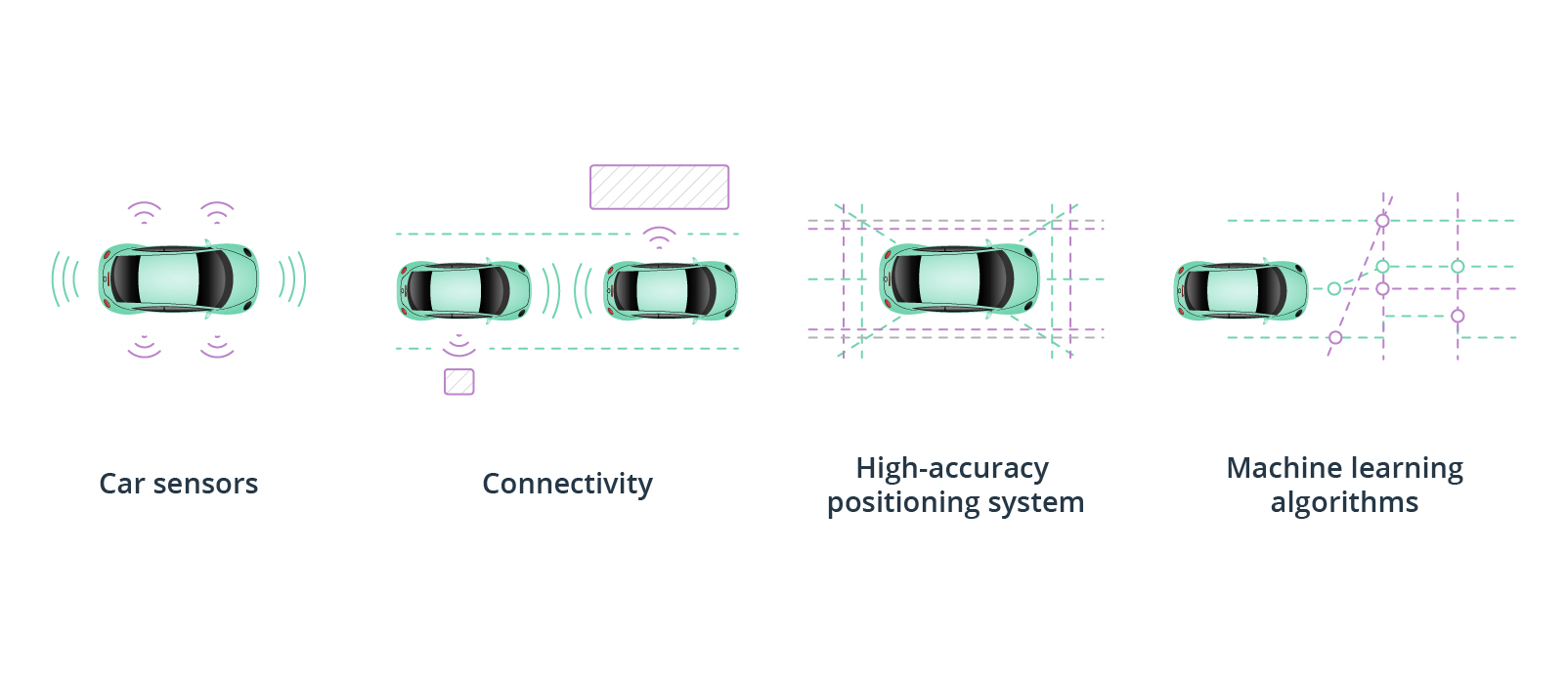
Autonomous vehicles use these tools to apply a variety of computer vision techniques in real-time:
- Pattern recognition — for example, to classify objects such as road signs and traffic lights
- Object tracking — to respond to moving objects like other cars or pedestrians
- Image segmentation — to identify and select relevant features from raw data, like focusing on pedestrians despite a busy background
- 3D vision — to understand the relative location of objects and navigate through space
These activities stem from a variety of machine learning algorithms trained for perception and decision-making.
Intelligent tolling systems
Modern toll systems don’t require drivers to stop and pay a fee with exact change. Because they use computer vision to dynamically collect payments, identify violators and analyze traffic flow.
Intelligent tolling systems can classify vehicles by type to collect the correct toll payment. Plate recognition systems use optical character recognition (OCR) to read license plates from images or video surveillance of vehicles. The system can check those numbers against a database of vehicle registrations. It matches the license plate number with the driver’s toll account — or looks up where to send the invoice.
Traffic flow analysis and traffic management
Algorithms can identify and track pedestrians in a scene. It’s important to recognize pedestrians no matter what they’re wearing or how they move. Similarly, traffic cameras count vehicles and monitor the flow of traffic. Computer vision can analyze traffic density on freeways and behavior at urban intersections. All these analytics inform traffic management to reduce traffic jams and improve road safety.
Computer vision in healthcare
It’s hard to overstate the overwhelming power of computer vision in healthcare innovation. Computer vision has advanced, real-time diagnostics, patient care and treatment. We’ve already touched on the benefits of computer vision in diagnostic imaging. Computer vision systems can detect subtle abnormalities that indicate diseases like cancer, pneumonia or Alzheimer’s.
Since AI can detect some patterns and features better than any human could, the medical application of computer vision makes earlier interventions possible and improves patient outcomes. In addition, computer-aided diagnostics in medical imaging has been shown to help healthcare providers reduce their workload by 88%.
Computer vision can also be like a second set of hands. Voice recognition technology is ineffective in loud and chaotic environments, such as an operating room or ER. Furthermore, using a keyboard or touchscreen requires scrubbing in and out. With hand tracking and gesture recognition, medical professionals can read images using gestures to save valuable time.

Diagnostic imaging
Missed cancers and false positives can both be devastating for patients, so we’re always trying to improve accuracy and specificity. The application of computer vision technology is helping.
Modern AI algorithms are about as good at detecting cancer as trained radiologists. Plus, since computers use different methods than humans, they can detect features that human eyes can’t perceive. But it turns out that humans and machines work best together. Researchers found that radiologists are better at detecting cancer with AI assistance than without it. Better yet, working with computer vision didn’t take them any additional time.
Computer vision has transformed medical imaging, including breast cancer screenings, lung scans, brain scans and cardiovascular imaging.
Dermatology
While radiology has been faster to adopt computer vision, this technology is just as powerful for dermatology. The Skin Cancer Foundation reports that skin cancer is the most common cancer in the world. As with other cancers, early detection is critical. Computer vision projects are improving skin cancer detection and reducing providers’ workload. Computer vision applications can even put screening tools in patients’ hands in the form of smartphone apps.
Computer vision in manufacturing
As discussed earlier, machine vision and computer vision methods are both used in manufacturing. As robotic process automation becomes more common in manufacturing processes, it’s getting more sophisticated. Visual intelligence plays a key role in the sophistication of computer vision applications in industry.
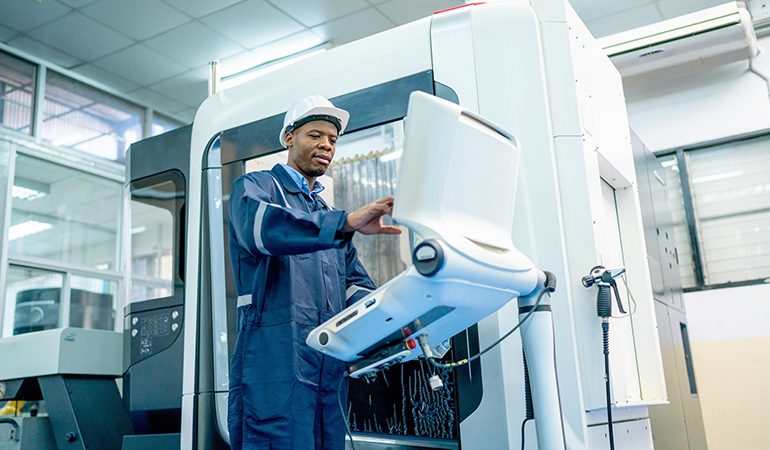
Predictive and preventative maintenance
Equipment maintenance is critical for worker safety and to minimize downtime. Computer vision can be used to monitor manufacturing equipment for signs of wear and tear. A computer vision system can constantly scan for changes to prevent failures. This is known as predictive maintenance. AI can also identify minor problems and flag them for repair before they cause problems. This is known as preventative maintenance.
Quality control
Quality control is a critical step in manufacturing, but manual inspection is very labor-intensive. In the past, manufacturers used lightweight machine vision systems to automate this process. Now that AI is more accessible, factories want more robust computer vision programs.
Machine vision systems were fussy, requiring specialized cameras and very particular image parameters. Since the new AI systems use machine learning, they are more flexible about input. Computer vision applications can identify parts — and defects — in almost any setting. That means that one computer vision program can function across multiple factories.
If you’re concerned that this flexibility comes with a reduction in accuracy, don’t be. One study analyzed a computer vision algorithm tasked with quality control for brake parts. Defects in these parts are too small to be identified by humans, but the algorithm achieved more than 95% accuracy in detecting them.
Computer vision in finance and insurance
Security and fraud protection are paramount in the financial and banking industries and computer vision provides many options. It makes transactions more secure, streamlines insurance claims processing and enriches financial planning.
Cash withdrawal using facial recognition
Traditional ATM transactions rely on PINs and physical cards, which can be lost, stolen or compromised. With computer vision, ATMs can now authenticate users through facial recognition, allowing customers to withdraw cash simply by looking at the machine’s camera. This technology enhances security by ensuring that only the account holder can access their funds, reducing the risks of card skimming, PIN theft, and unauthorized access. Biometric verification also speeds up the withdrawal process, making transactions more seamless and reducing waiting times at ATMs.
Augmented reality for financial planning
Financial planning can be complex, but augmented reality (AR) powered by computer vision makes it more interactive and accessible. AR applications allow users to visualize real-time financial data, displaying information such as budgeting trends, investment performance and retirement savings projections in a dynamic 3D format. By integrating AR into banking and wealth management apps, institutions can offer clients a more personalized and immersive financial planning experience.
Assessing damages through image analysis
Insurance companies have traditionally relied on manual inspections and paperwork-heavy processes to assess damages from accidents or disasters. Computer vision now enables insurers to analyze images of damaged vehicles, properties or assets to determine the extent of the damage and estimate repair costs quickly. This AI-driven approach speeds up claims processing, reduces the need for in-person inspections and minimizes human errors. By automating damage assessment, insurers can provide faster payouts to policyholders while detecting fraudulent claims more efficiently.
Computer vision in retail
Because the retail industry has many moving parts, computer vision also has many retail applications. These include both customer-facing applications and tasks behind the scenes.
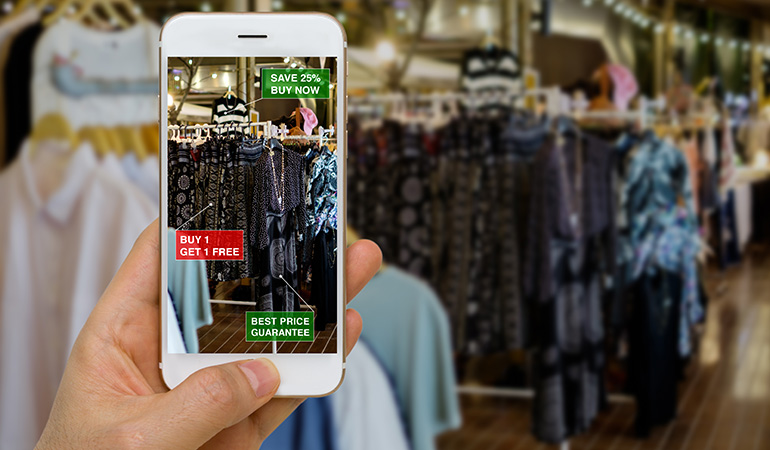
Customer data management
Facial recognition and object tracking help companies understand customer behavior. Don’t worry, we’re not talking about a dystopian invasion of privacy. Instead, computer vision opens the door to aggregate customer data that can improve the shopping experience for everyone.
A computer vision system can help with retail analytics. It can count people, measure waiting times and identify patterns in customer behavior. It can track customers’ paths through a space and make recommendations, just like those traffic flow systems in the transportation industry. For example, heat maps could indicate ideal locations for key products. Computer vision can also provide insights into optimizing a store’s layout to increase sales and reduce losses.
Self check-out
Going through self-check-out can be frustrating for customers who buy produce or other bulk items. They typically must check the item code and type it in themselves. Point of sale (POS) devices equipped with cameras and AI can recognize bulk items. Customers enjoy a more convenient shopping experience, and lines move more quickly. Walmart even uses software that detects missed scans.
Cashierless stores
Cashierless stores like Amazon Go take it a step beyond intelligent self-checkout. Computer vision techniques and deep learning track each customer and detect the items they pick up while shopping. When customers exit the store, the system bills for the items, with no need for a manual check-out process.
Computer vision in agriculture
Farming is getting a technological boost thanks to computer vision applications in agriculture. Smart farming technology uses visual data and machine learning to improve agricultural practices.
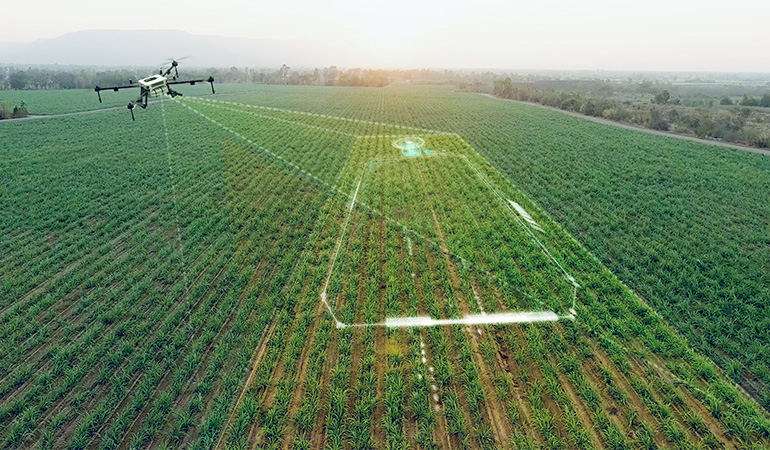
Smart greenhouses and farm management
Indoor food production is on the rise in places that don’t support traditional farming. Vertical farming and greenhouses make growing possible in arid environments and urban settings. But to keep the plants healthy, these climate-controlled facilities need to be monitored around the clock. Unified farm management solutions automate monitoring and control. With these systems, smart greenhouses and vertical farms practically take care of themselves.
Digital life cycle of crops in precision agriculture with computer vision
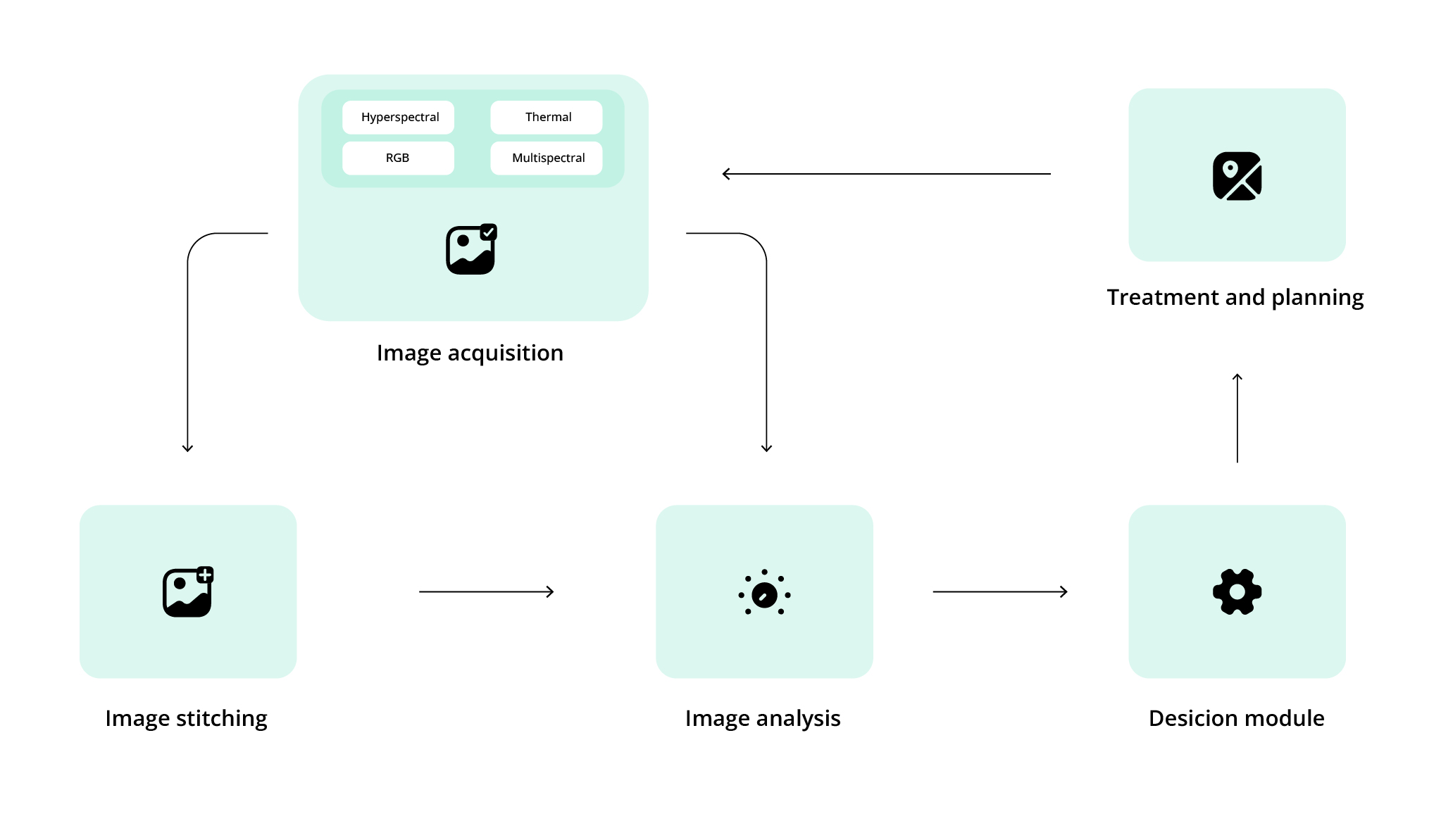
Real-time monitoring and land management
Farm drones with cameras and mapping solutions have changed the game for farmers. Use cases include monitoring crop growth and health and tracking livestock. Farmers can also watch for pests and check soil moisture. With real-time data, farmers can apply water and interventions exactly when and where they’re needed. These computer vision applications save money and water and reduce the use of chemicals. This helps the business, improves the health of the land and maximizes yields.
Computer vision adoption challenges
While the development of cloud computing and open technologies have made computer vision more accessible, that doesn’t mean it’s easy to get started on your own. The technology is complex and requires a lot of investment and resources. While offering tangible benefits, implementing computer vision solutions can exacerbate critical technological challenges such as visual data integrity and diversity, dimensional complexity, data labeling and categorization variability, on top of ethical considerations and cross-organizational readiness.
Many organizations run into problems with computer vision and their solutions before robust and efficient systems can be brought to life:
- Complexity and scalability — Machine learning operations (MLOps) require AI and ML expertise, which most organizations don’t have internally
- Cybersecurity — When dealing with huge volumes of data, it’s critical to apply best practices in privacy, security, and compliance
- IoT expertise — Computer vision programs require Internet of Things (IoT) solutions and services which are best entrusted to a knowledgeable IoT service provider
Fortunately, companies don’t need to go into it alone. Intellias has expertise in all these areas and more. Businesses across industries trust Intellias for the artificial intelligence services, cybersecurity consulting and IoT solutions they need to make their computer vision dreams a reality. We’ll help you master while mitigating the risks of computer vision, minimizing losses, and enhancing operational efficiency.
Computer vision is here to stay
Computer scientists have dedicated decades to enabling computers to perceive the world around them, empowering humans to utilize machines to meet their needs. Today, computer vision applications are reshaping our surroundings, yet the technology is just scratching the surface of its potential.
In the foreseeable future, we anticipate that computer vision algorithms will become increasingly robust and pervasive, leading to new and potentially unsettling applications.
With GenAI technology making many changes, computer vision is expected to undergo man changes, too. For example, its ability to generate synthetic data can improve the training of computer vision systems, such as those used in facial recognition and object detection, making it more cost-effective and less intrusive to privacy. Also, it can expedite the labeling of training data, traditionally a laborious and expensive task when performed manually by humans.
The technology for extracting real-time insights from live video has matured, with expectations to expand further. Already deployed in crowd scanning, security surveillance and factory monitoring, real-time computer vision is poised for valuable new applications as algorithms advance.
By applying computer vision to satellite images, we can monitor diverse activities on Earth, including deforestation, the spread of floods and wildfires, urban expansion and marine ecosystem dynamics. As satellite imagery and computer vision algorithms advance, we can expect deeper insights facilitating more timely interventions and optimized resource usage.
Furthermore, computer vision is anticipated to comprehend and alleviate risks associated with technology development. Many view computer vision as vital in addressing the threat posed by increasingly convincing AI-generated deepfakes. Its ability to examine images and spot clear signs of algorithmic creation is crucial for distinguishing real from computer-generated content, making it significant in addressing concerns regarding propaganda and detecting disinformation. Issues of bias and fairness permeate all facets of AI but are particularly salient in computer vision. For instance, facial recognition algorithms often demonstrate reduced effectiveness in identifying individuals with darker skin tones, heightening the potential for errors, especially in surveillance or law enforcement contexts. In the years to come, there will likely be a heightened emphasis on privacy-centric AI and computer vision technologies, such as automatic face blurring, designed to operate in public spaces without infringing on privacy rights.
In the fast-changing world of computer vision, partnering with a trusted tech ally can help you navigate innovation and avoid pitfalls, ensuring smooth integration and maximizing benefits.
Get clearer insights from your visual data. Contact an Intellias expert today for computer vision technology focused on your business needs.



